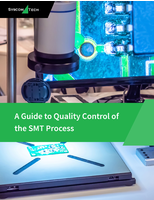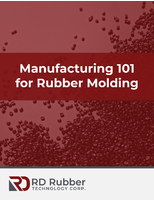Invest in Your Compressed Air System to Save Money!
Gavin Monn, President at Boge America identifies the key areas within a compressed air system where investment can, in most cases, pay for itself through sustainable reductions in energy costs.
"Energy is the most costly part of running a compressed air system, accounting for 75% of the lifecycle costs of the compressed air system. However, compressed air is one technology where most businesses can improve efficiency and in doing so reduce their associated energy costs.
Frequency control
Compressed air demand fluctuates depending on shift and production patterns. For some users these fluctuations may be greater in the current economic climate. Producing more air than is required creates unnecessary cost.
Where appropriate, investing in a frequency controlled compressor can exactly adapt to demand fluctuations producing the required volume at a constant pressure thus reducing energy costs. The Boge SF series of frequency controlled screw compressors can help to produce savings up to 40%.
Frequency control minimizes idling time and evens out air demand fluctuations by working strictly in accordance with the compressed air demand and so producing the exact volume of compressed air at the pressure required.
A correctly sized Frequency compressor will virtually eliminate off load running costs and stop starting current peaks. As a result energy savings can be made.
It is worth consulting with a compressed air energy expert. Choosing to upgrade to a frequency controlled screw compressor will not be the right option in every application.
In Control
Introducing a control system that monitors and optimizes the compressed air system can assist in reducing energy costs. Boge has recently launched the airtelligence PROVIS which perfectly encapsulates the advantages of implementing an intelligent and comprehensive energy management system.
Designed to continuously adapt to the consumer's momentary demands, airtelligence PROVIS ensures the most efficient compressor combination is working at all times. A permanent consumption calculation continuously underpins efficient operation of all the interconnected compressors.
Unlike traditional control systems, with airtelligence PROVIS crucial efficiency related parameters are visually displayed. This provides a transparent log of the behaviour of the compressor station and its ongoing efficiency. All relevant parameters are downloadable onto a PC to keep the user updated 24/7 to prevent energy costs going off course.
Airline system
It has been estimated that the leak rate on an unmanaged compressed air distribution system can be as much as 40% of the output. And, just one 3mm leaking hole costs roughly 3kW. Additionally, unmanaged air leaks heighten the maintenance required on the associated equipment as unnecessary compressed air is produced.
Significant low cost savings can be made by simply identifying and repairing leaks. It is even possible to identify air leaks whilst also assessing the efficiency of your compressed air system yourself. At the end of a working day record the pressure on the air receiver before you turn the compressor off - then start your stop watch. By timing how quick the pressure drops in the receiver you can determine the rate of air leakage in your compressed air system. If your system is efficient, the pressure will remain the same once the compressor has been switched off and in an ideal world it should still be the same when you come to switch on the compressor the next day. However, if the pressure has dropped it is a sure sign that the system is inefficient and that you have air leaks.
Of course, the most comprehensive method is leak detection. By using an ultrasonic leak detector, a compressed air professional can detect and locate the air leaks precisely. Leak detection will often form part of a wider compressed air audit such as the Boge AIReport energy efficiency check up service.
Up to 12 compressors along with associated equipment such as compressed air dryer dewpoint can be logged simultaneously with the Boge AIReport. The logged data accumulates into a report that highlights the current cost of any system in-efficiencies.
Immediate action can then be taken to eliminate unnecessary costs which in most cases start with low and no cost methods such as repairing air leaks.
You may also want to assess the airline distribution system. Traditional screwed steel pipe can develop an average leakage rate of 10 - 15% in old compressed air systems. Opting for modern aluminium piping can improve flow rates reduce pipe diameter and eliminate leakage.
Heat recovery
Almost the entire energy consumption from the supply net of a standard compressor is converted into heat. Taking the example of an oil lubricated screw compressor, up to 94% of the input electrical energy is available for heat recovery.
Heat recovery provides another energy saving opportunity for many compressed air users. The waste heat generated by the compressor can be re-directed into heating spaces, such as workshops, or for pre-heating domestic water. The associated energy costs can therefore be reduced.
The Boge Duotherm heat recovery system can reclaim up to 75% of the electrical power taken into the compressor. This is taken in the form of heat recovered from the compressor oil.
Developed for oil injected screw compressors, these heat exchangers operate independently from the cooling system in a highly efficient manner. Installed directly into the compressors oil circuit, the Boge Duotherm heat exchanges are able to efficiently use the waste heat.
Lubricant choice
Even the lubricant can have an effect on the energy efficiency of the compressed air system! Opting for a quality long life synthetic lubricant such as Boge Syprem 8000S can yield energy savings of up to 5%. Creating virtually no residual carbon or lacquer deposits, having a stable viscosity, low oil carryover with corrosion as well as wear protection these key characteristics help which make this a highly efficient and energy saving lubricant option.
Maintenance
Following the recommended maintenance schedule additionally contributes to the overall energy efficiency of the compressed air system. Eliminating or even reducing service visits will affect the quality of the air produced, the lifetime of wearing parts and the associated energy costs.
It is a fact that a poorly maintained compressor will not be working energy efficiently. A compressor that is running inefficiently will use more energy which will increase compressed air related electricity bills.
Invest to save!
Although a number of efficiency remedies can be made at no or low cost (such as repairing air leaks) most of the opportunities will require investment. The good news - most will be self financing in terms of the energy savings they will create!
Where investment into low carbon technologies is recommended a compressed air expert will be able to identify the likely payback period."
Telephone 770-874-1570 or visit www.boge.com/us for more energy saving advice.
BOGE Amercia, Inc. is the American Daughter Company of BOGE International GmbH based in Bielefeld, Germany. BOGE manufactures a comprehensive range of oil lubricated and oil free screw and piston compressors used by all sectors of industry to supply compressed air for a wide range of manufacturing processes. It also supplies a complementary range of filters, dryers and condensate management equipment. The product is sold and serviced through a growing network of dedicated distributors throughout the USA and Canada.
BOGE America, Inc.
3414 Florence Circle, Suite 100, Powder Springs, GA 30127
Telephone: +1 (0) 770-874-1570 Facsimile: +1 (0) 770-874-1571
E-mail: usa@boge.com Website: www.boge.com/us




